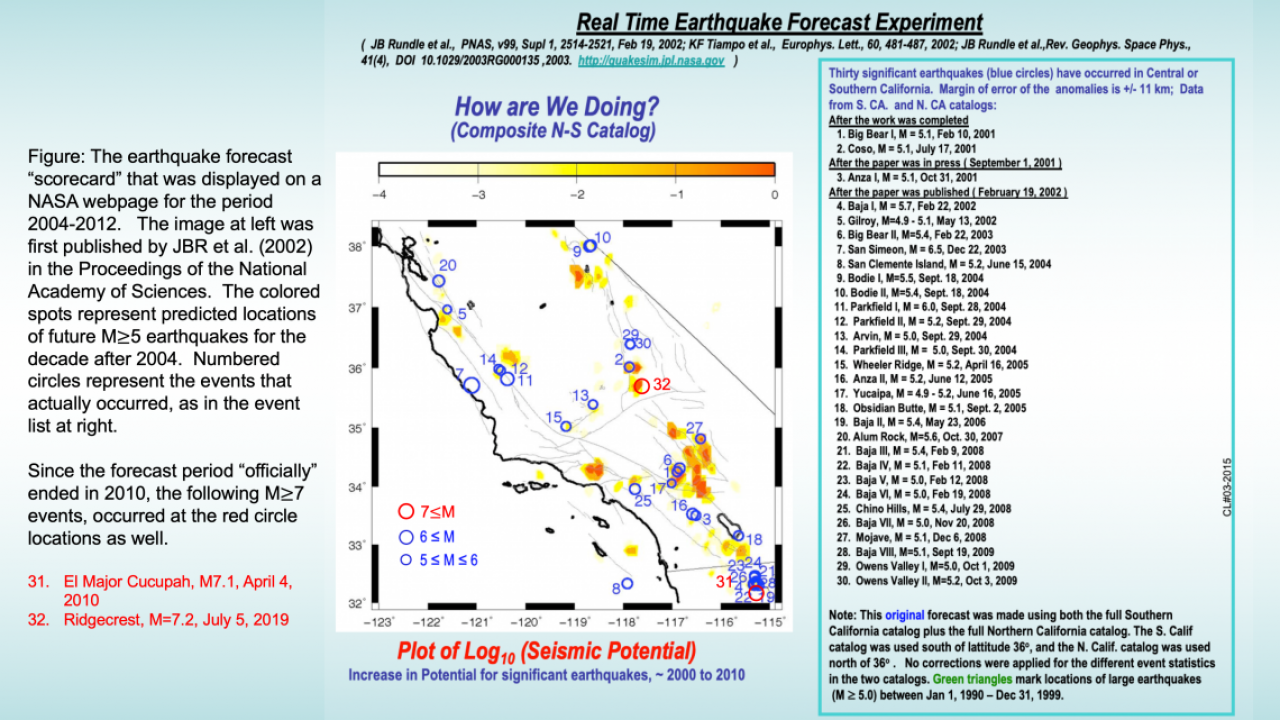John Rundle, distinguished professor of physics and of earth and planetary sciences at UC Davis, and colleagues were recently invited to contribute to the prestigious physics journal Reports on Progress in Physics on their work in earthquake forecasting and nowcasting.
Charles Richter observed that “only fools and charlatans predict earthquakes,” which reflects the fact that despite more than 100 years of effort, seismologists remain unable to do so with reliable and accurate results.
In the context of earthquakes, prediction involves specifying the location, time, and size of an earthquake. Forecasting involves giving a probability of an earthquake in a given area over a period of time, which may be months or years. A nowcast is a computation of the current state of risk of the system.
The article reviews the approaches that have been used in attempts to predict or forecast earthquakes. Reliable prediction is extremely difficult if not impossible, the authors write.
In 2002, Kristy Tiampo, Rundle and collaborators published an earthquake forecast map for California based on statistical methods. Colored patches on the map indicated locations forecast to experience earthquakes. The results showed that the original colored patches calculated in 2001 for the most part successfully identified the location of future events, with few false positives, as far as 18 years into the future.
The review does not deal extensively with earthquake early warning systems. These systems do not forecast or predict earthquakes before they occur, but give a few seconds or tens of seconds warning of severe shaking. That may be enough time to have people take cover, shut down sensitive facilities, halt trains and elevators, for example.
Media Resources
The complex dynamics of earthquake fault systems: new approaches to forecasting and nowcasting of earthquakes (Reports on Progress in Physics)
Earthquake Forecast Scores Success (UC Davis News, 2004)
